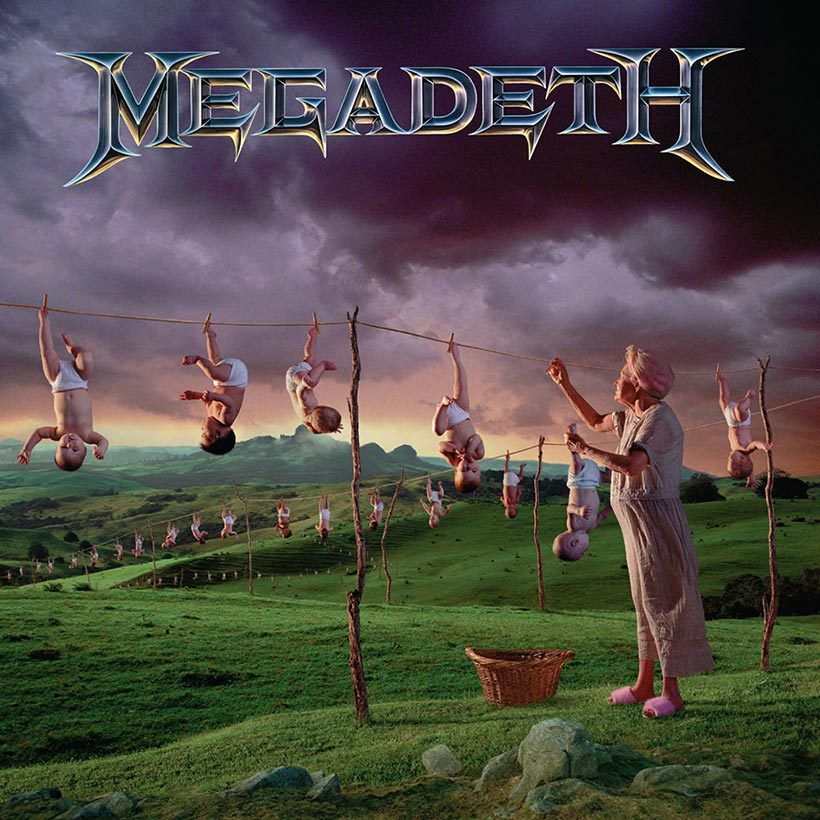‘Youthanasia’: How Megadeth Traded Speed For Power In The Metal Stakes
Megadeth’s ‘Youthanasia’ album confirmed that, a decade after forming the group, Dave Mustaine’s ambition was to be in the biggest metal band on the planet.

From their inception in 1983, Megadeth set out to be the fastest metal band in thrash. By the time they dropped Youthanasia in 1994, they had morphed into a very different beast. The album’s predecessor, 1992’s Countdown To Extinction, was delivered at a considerably slower pace, yet with no less metallic sensibilities. By flexing a more creative songwriting muscle, the LA thrashers achieved a mainstream profile by entering the Billboard 200 at No. 2 and touring arenas around the world. The pressure was on, then, for the same level of success from its follow-up.
Listen to Youthanasia on Apple Music and Spotify.
A new way of working
Dave Mustaine had moved to Phoenix in an effort to maintain his sobriety before work started on Youthanasia. It didn’t last, and the frontman completed another spell in rehab before the writing process began. Nevertheless, the album was born out of the most stable period in the band’s history, being the third successive album to maintain Megadeth’s “classic line-up.”
Mustaine, too, made a deliberate effort to work more closely with the band, despite some tensions that flared during the sessions. At the request of producer Max Norman, Megadeth slowed their tempo further from Countdown To Extinction, focusing on more powerful vocal melodies and radio-friendly song structures. For anyone thinking the formula would weaken the mix, however, they need only listen to thundering opener “Reckoning Day” to realize Megadeth still meant business.
“Reckoning Day” stands as testimony that the band’s less-is-more approach meant no loss of power. The simplicity of its muscular lead riff allows for a force so colossal that there’s no room for overly indulgent guitar solos or convoluted fretwork. In fact, Mustaine was learning to allow Megadeth to work as a unit, with the rhythm section now standing toe-to-toe with its virtuoso six-stringers.
That’s not to say there was no place for guitar histrionics elsewhere on Youthanasia. Indeed, “Train Of Consequences”’s inherent rock radio-ness was offset by Marty Friedman’s nimble finger work, giving the song a distinct Megadeth flavor. The plodding groove of “Addicted To Chaos” is balanced by Friedman and Mustaine’s guitar interplay, and while “A Tout Le Monde” veers dangerously close to ballad territory, it’s pulled back by the menace of the frontman’s snarling vocals.
A more socially conscious outlook
Throughout Youthanasia, Megadeth’s newfound power comes from the simplicity of the likes of “Elysian Fields” and “The Killing Road,” each riff and groove trained precisely for its target, rather than the scattershot approach of their million-miles-per-hour speed metal of the past. And while “Blood Of Heroes” suggests a continuation of the military themes of previous albums, Megadeth’s sixth record imparts a more socially conscious outlook; its title plays on “euthanasia”, highlighting Mustaine’s concern for the future of the younger generation with the prevalence of violence and drugs among their faction.
Over a decade after forming his own group, Dave Mustaine no longer wanted to be in the fastest metal band on the planet. Instead, his ambition was to be in the biggest. Though Megadeth never matched the success of genre peers Metallica, Youthanasia nevertheless continued the momentum initiated by its predecessor. Following its release, on November 1, 1994, the album was eventually certified platinum, selling more than a million copies in the US alone.












